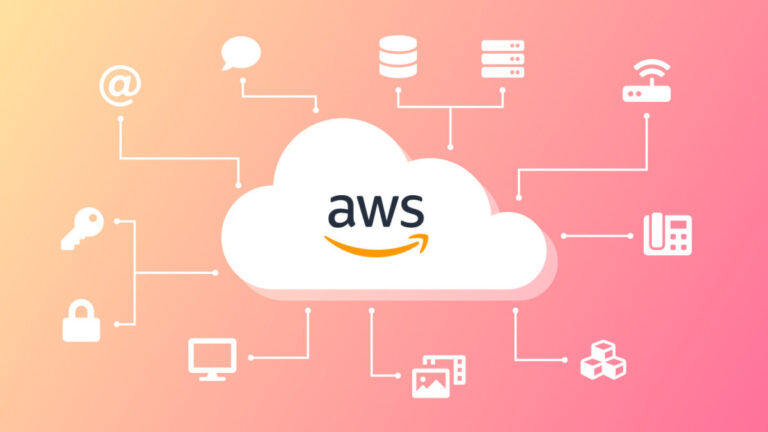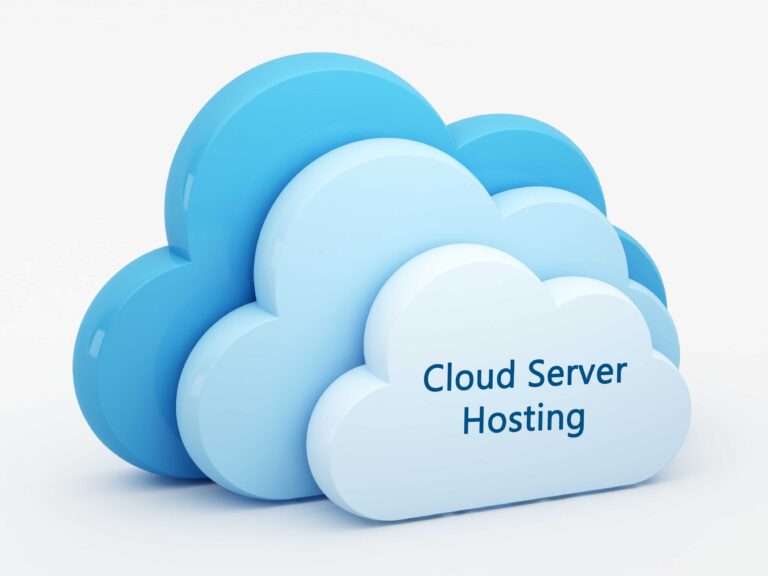Best Server Cloud: Navigating the Landscape of Cloud Computing
Understanding Cloud Servers
Cloud servers are virtualized computing resources that can be accessed over the internet, providing scalable and flexible solutions for businesses and individuals. They have revolutionized how we store, process, and manage data.
Definition of Cloud Servers
A cloud server is a virtualized computing instance that operates on a remote data center infrastructure. It allows users to access computing resources on-demand via the Internet and eliminates the need for physical hardware.
Evolution of Cloud Computing
Cloud computing has rapidly grown over the past decade, driven by advancements in virtualization, networking, and storage technologies. Innovation and transformation have marked the evolution from simple data storage to sophisticated cloud platforms.
GoDaddy Cloud Server: Empowering Your Online Presence
Importance of Choosing the Best Cloud Server
Choosing the right cloud server is critical for ensuring optimal performance, reliability, and cost-effectiveness in your computing environment. From affecting overall business operations to affecting the bottom line, the choice of cloud servers can have far-reaching consequences.
Impact on Performance
The performance of your cloud server directly impacts the speed, efficiency, and responsiveness of your applications and services. A poorly optimized server can lead to slow load times, decreased productivity, and ultimately, dissatisfied users.
Cost Considerations
While the allure of cheap cloud solutions may be tempting, it’s essential to consider the long-term cost implications of your cloud server choice. Hidden fees, unpredictable pricing structures, and inefficient resource allocation can quickly add up, resulting in unexpected expenses and budget overruns.
Key Features to Look for
Scalability and Flexibility
Horizontal Scaling
Horizontal scaling, also known as scaling out, involves adding more servers to distribute workload across multiple machines. This method allows for seamless expansion of resources to meet increasing demand without affecting performance.
Vertical Scaling
Vertical scaling, or scaling up, involves increasing the resources of a single server, such as CPU, memory, or storage capacity. While vertical scaling can provide a quick fix for resource shortages, it may not be as cost-effective or scalable as horizontal scaling in the long run.
Reliability and Uptime
Redundancy
Redundancy is essential for ensuring high availability and uptime in cloud computing environments. By replicating data and resources across multiple servers and data centers, redundancy minimizes the risk of service disruptions and data loss due to hardware failures or outages.
Service Level Agreements (SLAs)
Service Level Agreements (SLAs) define the level of service and support that a cloud provider guarantees to its customers. SLAs typically include uptime guarantees, response times for support requests, and compensation for service disruptions beyond specified thresholds.
Security Measures
Data Encryption
Data encryption is crucial in safeguarding sensitive data from unauthorized access or interception. Cloud servers typically employ encryption algorithms to encrypt data at rest and in transit, ensuring confidentiality and integrity throughout the entire process.
Access Controls
Access controls govern who can access, modify, or delete data and resources within a cloud environment. By implementing robust access control mechanisms, organizations can enforce security policies, prevent unauthorized access, and mitigate the risk of insider threats.
Performance Optimization
High-Speed Connectivity
Fast and reliable cloud access depends on high-speed connectivity, leveraging low-latency networks to minimize data transfer times and optimize performance.
Load Balancing
Load balancing distributes incoming traffic across multiple servers to ensure optimal resource utilization and prevent the overloading of individual servers. By intelligently distributing workloads, load balancers can improve performance, scalability, and reliability in cloud environments.
Cost-Effectiveness
Pay-Per-Use Model
The pay-per-use model allows organizations to pay only for the resources and services they consume, eliminating the need for upfront investment in hardware or software licenses. This flexible pricing model enables cost optimization and budget predictability for businesses of all sizes.
Predictable Pricing Plans
Predictable pricing plans provide transparency and clarity in billing, allowing organizations to budget and forecast expenses accurately. By offering fixed-rate or tiered pricing structures, cloud providers enable customers to plan and manage their cloud spending effectively.
Different Types of Cloud Servers
Public Cloud Servers
Characteristics
Public cloud servers are hosted and managed by third-party providers, offering shared infrastructure resources to multiple users over the Internet. These servers are highly scalable, cost-effective, and accessible from anywhere with an internet connection.
Use Cases
Cloud computing servers on the public network are an excellent choice for small businesses, start-ups, and individuals who want cost-effective and scalable options. These servers are commonly used for various purposes such as website hosting, application development, and data analysis.
Private Cloud Servers
Characteristics
Private cloud servers are dedicated infrastructure resources exclusively allocated to a single organization, offering enhanced control, security, and customization options. These servers are ideal for organizations with strict compliance requirements or sensitive data handling needs.
Use Cases
Private cloud servers are commonly utilized by enterprises with strict regulatory requirements, like healthcare, finance, and defense, for secure data storage, mission-critical applications, and internal IT infrastructure.
Hybrid Cloud Servers
Characteristics
Hybrid cloud servers combine elements of both public and private cloud environments, offering a flexible and scalable infrastructure solution. These servers allow organizations to leverage the benefits of both deployment models while maintaining control over sensitive data.
Use Cases
Hybrid cloud servers are a suitable solution for businesses that need to combine their existing infrastructure with public cloud services. The combination of on-premises and cloud resources provides greater flexibility, improves data sovereignty, and enhances disaster recovery capabilities. Hybrid cloud servers are often used for deploying hybrid applications, synchronizing data, and managing workload bursts.
Factors Influencing the Best Cloud Server Choice
Workload Requirements
CPU Intensive
Workloads that are CPU-intensive require ample processing power to perform computational tasks efficiently. When choosing a cloud server, consider the CPU specifications, such as clock speed, cores, and cache size, to ensure optimal performance for CPU-bound applications.
Memory Intensive
Workloads that require a lot of memory need a significant amount of RAM to store and process large data sets or perform complex calculations. When selecting a cloud server, it’s crucial to consider the memory capacity, speed, and type (such as DDR4 or ECC RAM) to meet the memory requirements of your applications.
Geographic Location
Data Sovereignty
Data sovereignty refers to the legal jurisdiction governing the storage and processing of data, which may vary depending on the physical location of the cloud server. When choosing a cloud provider, consider the data sovereignty laws and regulations applicable to your organization to ensure compliance and mitigate legal risks.
Latency Considerations
Latency refers to the delay in data transmission between the client and the cloud server, which can impact application performance and user experience. When selecting a cloud provider, consider the proximity of data centers to end-users or network endpoints to minimize latency and optimize responsiveness.
Compliance and Security Needs
Industry Regulations
Industry regulations, such as GDPR, HIPAA, or PCI DSS, impose specific requirements and standards for data protection, privacy, and security. When choosing a cloud server, ensure that the provider offers compliance certifications and security controls aligned with your industry regulations to avoid legal liabilities and penalties.
Data Sensitivity
The sensitivity of data assets, such as personal information, financial records, or intellectual property, dictates the level of security and access controls required to protect them from unauthorized access or disclosure. When selecting a cloud server, prioritize providers that offer robust encryption, access controls, and audit trails to safeguard sensitive data.
Cloud Server Hosting : A Comprehensive Guide
Top Providers and Their Offerings
Amazon Web Services (AWS)
Key Features
- A broad range of cloud services, including computing, storage, networking, databases, and AI/ML.
- Global infrastructure with multiple regions and availability zones for high availability and fault tolerance.
- Flexible pricing options, such as on-demand, reserved, and spot instances, optimize cost and performance.
Pricing Structure
- Pay-as-you-go pricing model with per-hour or per-second billing for compute instances.
- Discounts for reserved instances with upfront commitments and long-term contracts.
- Spot instances for unused capacity at significantly discounted rates, suitable for fault-tolerant and flexible workloads.
Microsoft Azure
Key Features
- Integrated cloud platform with services for computing, storage, networking, databases, and AI/ML.
- Hybrid cloud capabilities for seamless integration with on-premises infrastructure and existing Microsoft solutions.
- Enterprise-grade security and compliance features, including encryption, identity management, and threat detection.
Pricing Structure
- Flexible pricing options, including pay-as-you-go, reserved instances, and enterprise agreements.
- Azure Hybrid Benefit for customers with existing Microsoft licenses to save on virtual machine costs.
- Azure Spot Instances for cost-effective access to unused capacity at discounted rates, suitable for fault-tolerant and flexible workloads.
Google Cloud Platform (GCP)
Key Features
- Global network infrastructure with high-speed connectivity and edge locations for low-latency access.
- Comprehensive suite of cloud services, including computing, storage, networking, databases, and machine learning.
- Focus on sustainability and environmental responsibility with carbon-neutral operations and renewable energy commitments.
Pricing Structure
- Simplified pricing model with per-second billing for compute instances and pay-as-you-go pricing for other services.
- Sustained use discounts for consistent workloads with automatic discounts based on usage volume.
- Preemptible VMs for short-lived and batch processing workloads at significantly reduced rates, suitable for non-critical applications and tasks.
Best Practices for Utilizing Cloud Servers
Regular Monitoring and Optimization
Performance Metrics
Monitor performance metrics, such as CPU utilization, memory usage, disk I/O, and network traffic, to identify bottlenecks, optimize resource allocation, and improve overall system performance.
Resource Allocation
Allocate resources efficiently based on workload requirements, scaling compute, storage, and networking resources dynamically to meet changing demands and optimize cost-effectiveness.
Data Backup and Disaster Recovery
Automated Backup Solutions
Automated backup solutions, such as snapshots, replication, or incremental backups, should be implemented to ensure data integrity in case of hardware failures, data corruption, or human errors.
Disaster Recovery Plans
Develop comprehensive disaster recovery plans, including backup and recovery procedures, failover strategies, and data replication across geographically dispersed locations, to minimize downtime and ensure business continuity in the face of disruptions.
Security Protocols Implementation
Regular Security Audits
Conduct regular security audits and vulnerability assessments to identify and remediate security weaknesses, ensure compliance with industry standards, and mitigate the risk of data breaches or cyber-attacks.
Multi-Factor Authentication
Implement multi-factor authentication (MFA) mechanisms, such as biometric verification, one-time passwords, or hardware tokens, to enhance access controls and prevent unauthorized access to cloud resources and sensitive data.
Case Studies: Success Stories with the Best Cloud Servers
Company A: Scaling Globally with AWS
Challenges Faced
- Rapid growth and global expansion necessitated scalable and reliable infrastructure solutions.
- Legacy on-premises systems were unable to keep pace with increasing demands and lacked flexibility and scalability.
Solutions Implemented
- Migrated workload to AWS cloud servers for elastic scalability, high availability, and global reach.
- Leveraged AWS services, such as EC2, S3, and RDS, for compute, storage, and database needs, respectively.
- Implemented auto-scaling, load balancing, and content delivery networks (CDNs) for performance optimization and user experience enhancement.
Company B: Ensuring Data Security with Azure
Security Measures Implemented
- Implemented Azure Key Vault for centralized management and secure storage of cryptographic keys, secrets, and certificates.
- Configured Azure Active Directory (AAD) for identity and access management, including role-based access controls (RBAC) and conditional access policies.
- Utilized Azure Security Center for threat detection, vulnerability management, and security incident response across hybrid cloud environments.
Compliance Achieved
- Achieved compliance with industry regulations, such as GDPR, HIPAA, and SOC 2, through Azure’s robust security and compliance features.
- Demonstrated adherence to regulatory requirements and customer data protection standards through third-party audits and certifications.
Company C: Hybrid Cloud Success with GCP
Integration Challenges
- Hybrid cloud deployment required seamless integration between on-premises infrastructure and Google Cloud Platform (GCP) services.
- Legacy systems and data silos posed challenges for data migration, synchronization, and interoperability.
Benefits Realized
- Implemented Google Kubernetes Engine (GKE) for containerized application deployment, orchestration, and management across hybrid environments.
- Leveraged Anthos for hybrid cloud and multi-cloud management, enabling consistent operations and workload portability.
- Realized cost savings, operational efficiency, and innovation acceleration through GCP’s comprehensive suite of cloud services and global network infrastructure.
Future Trends in Cloud Server Technology
Edge Computing Integration
Edge Data Centers
Deploying edge data centers closer to end-users or IoT devices for low-latency processing, real-time analytics, and enhanced user experience in distributed computing environments.
Real-Time Processing
Real-time data processing and analytics are at the edge for mission-critical applications, IoT deployments, and emerging use cases like autonomous vehicles and smart cities.
Serverless Architectures
Event-Driven Computing
By implementing event-driven architectures and serverless computing models, businesses can efficiently scale and optimize resources in response to changing workloads.
Cost Optimization
Leveraging serverless technologies, such as AWS Lambda, Azure Functions, and Google Cloud Functions, for pay-as-you-go pricing, reduced operational overhead, and increased agility in application development and deployment.
AI and Machine Learning Integration
Predictive Analytics
Harnessing AI and machine learning for predictive analytics, anomaly detection, and pattern recognition in healthcare, finance, and cybersecurity domains.
Automated Resource Allocation
AI-driven automation is used to intelligently allocate resources, optimize workloads, and plan capacity in cloud environments to improve performance, efficiency, and cost-effectiveness.
Quantum Computing Applications
Enhanced Processing Power
Quantum computing explores solving complex computational problems, cryptography, and optimization tasks beyond classical computers.
Data Encryption Advancements
In the age of quantum computing and quantum-enabled cyber threats, it is crucial to create encryption algorithms and protocols that can withstand quantum attacks to ensure the security and privacy of data.
Conclusion
Choosing the right cloud server is a crucial decision that can significantly impact the performance, reliability, and cost-effectiveness of your computing infrastructure. It’s essential to understand the key features, different types, factors that influence the decision, top providers, best practices, case studies, and future trends in cloud server technology. By doing so, organizations can make informed decisions and leverage the full potential of cloud computing to drive innovation, growth, and competitive advantage in the digital era.
As cloud computing continues to evolve and shape the future of IT infrastructure, the role of cloud servers will become increasingly crucial in enabling organizations to scale, innovate, and thrive in an ever-changing landscape. By embracing emerging trends, adopting best practices, and leveraging the latest technologies, businesses can stay ahead of the curve and capitalize on the endless possibilities of cloud server technology for driving digital transformation and achieving success in the modern era of computing.






Very great info can be found on site.Blog monetyze